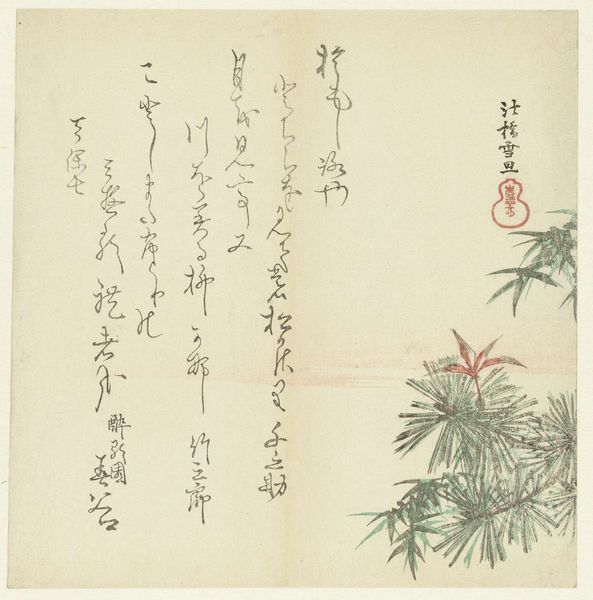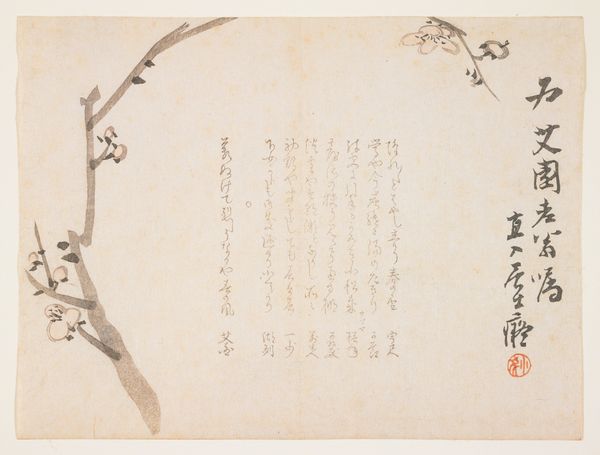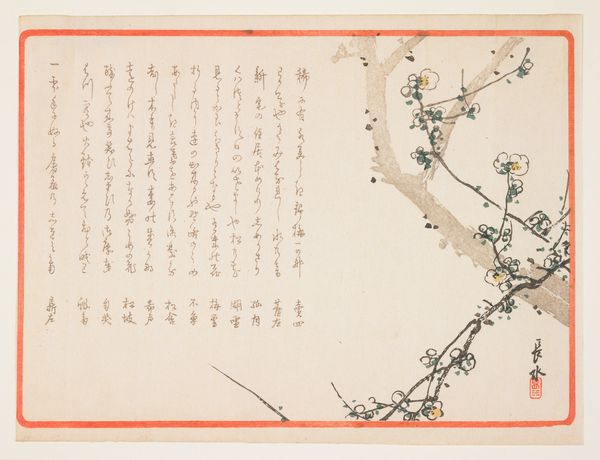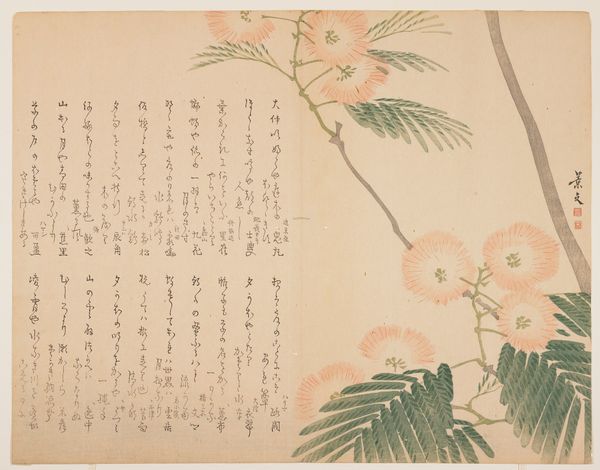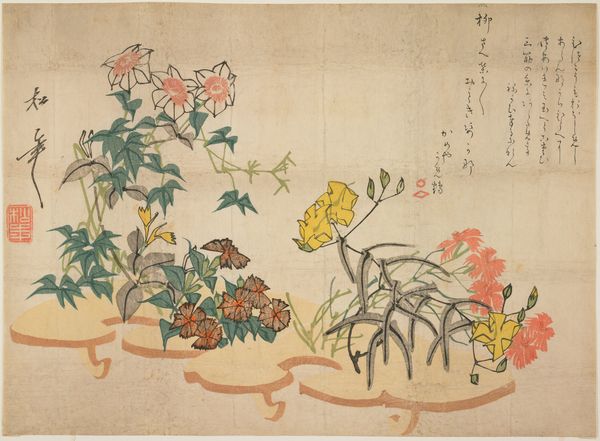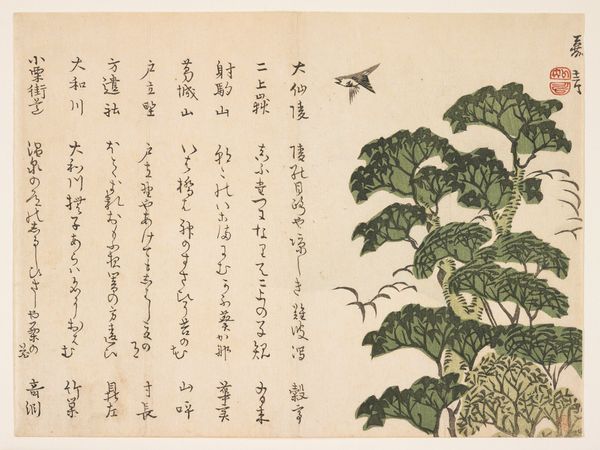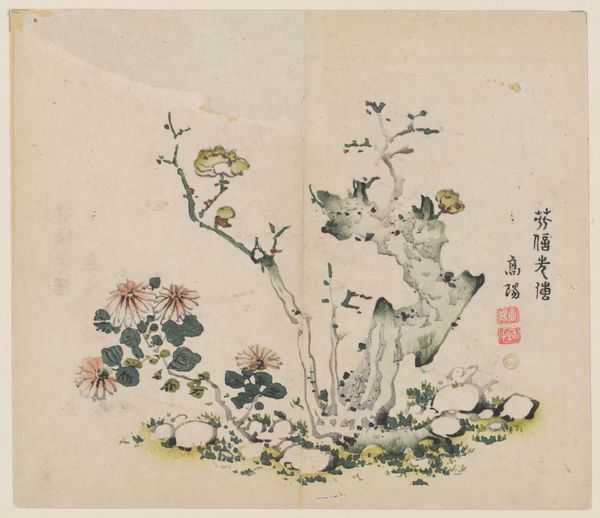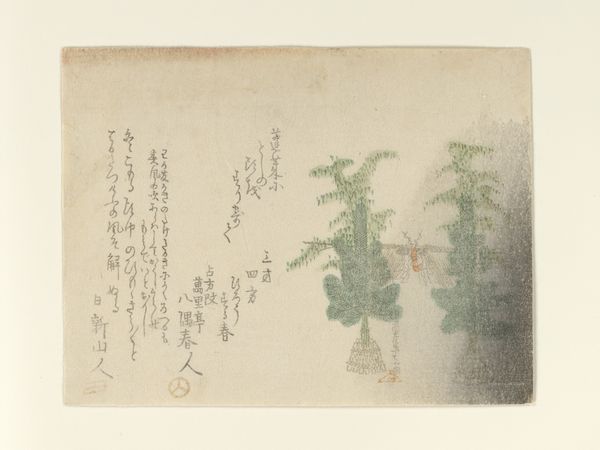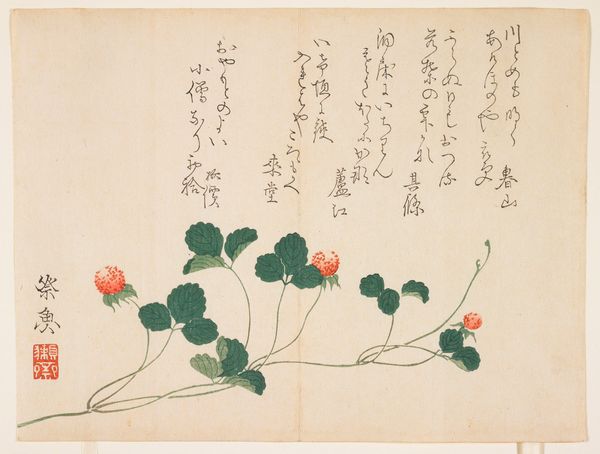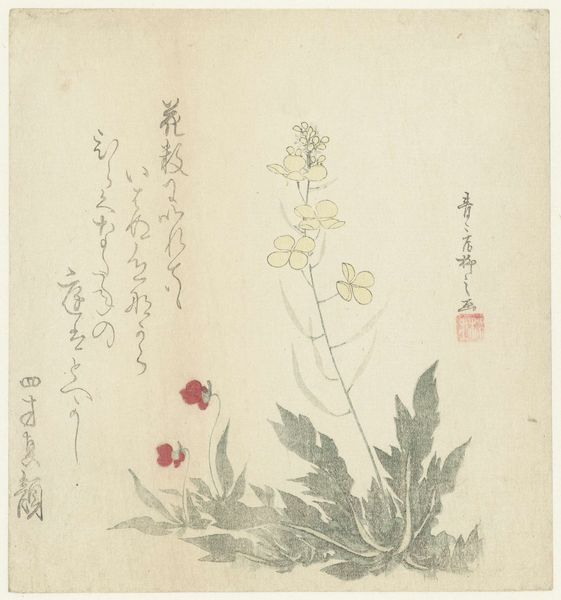
print, ink
# print
#
asian-art
#
landscape
#
etching
#
ukiyo-e
#
japan
#
figuration
#
personal sketchbook
#
ink
#
line
Dimensions: 7 3/8 x 7 3/8 in. (18.7 x 18.7 cm) (image, sheet)
Copyright: Public Domain
Curator: This is a print from the 1850s called "(Autumn flowers and singing insects)" by Kō Sukoku II, currently housed at the Minneapolis Institute of Art. It's primarily made of ink and print, but what I notice first is the interesting linear composition featuring what looks like a procession of insects. What captures your attention? Editor: Well, besides the charming insect parade, I'm drawn to how delicate it feels despite the everyday subject. What do you see in this piece beyond the immediately visible? Curator: I think it’s crucial to examine this work as an etching - consider the physical labor of creating the plate, the conscious decisions around line weight to create texture and depth using primarily line, how it would have been printed. Then let's ask, why insects? Were insects popular as a motif for mass consumption through ukiyo-e prints? How does this particular composition challenge traditional landscape paintings? It really brings forward a different perspective from which we would assess similar art, say from the Edo Period. Editor: So you're thinking about it not just as art, but as a product of labor and cultural exchange. That's really interesting. I guess I was focusing on the aesthetic qualities of it, whereas you immediately went to the means of production. Curator: Exactly! The choices the artist makes, even down to the ink and paper, tell us so much about the socio-economic forces at play. Editor: I never would have thought about it that way. Considering this as part of a wider landscape of material production changes how I see its value. Curator: Absolutely. The material informs the meaning and helps us break away from only appreciating a beautiful image to interrogating how it came to be and what it represents within its historical context. Editor: Okay, I definitely have a lot to think about now in terms of how art is both a commodity and something with inherent aesthetic value. Thanks for your time!
Comments
minneapolisinstituteofart about 2 years ago
⋮
Japanese artists frequently pictured animals aping the actions of humans. This print, however, shows a band of singing crickets marching through the field. The insect at the front looks like a conductor. While some are holding clarinet-like instruments, the others carry bellflowers and other autumn flowers. The background is filled with tasseled pampas grass and flowering bush clover. The harvest moon is partially defined by the encircling gradations of blue pigment. These details indicate the height of autumn when the fields are filled with the sound of singing insects.
Join the conversation
Join millions of artists and users on Artera today and experience the ultimate creative platform.
